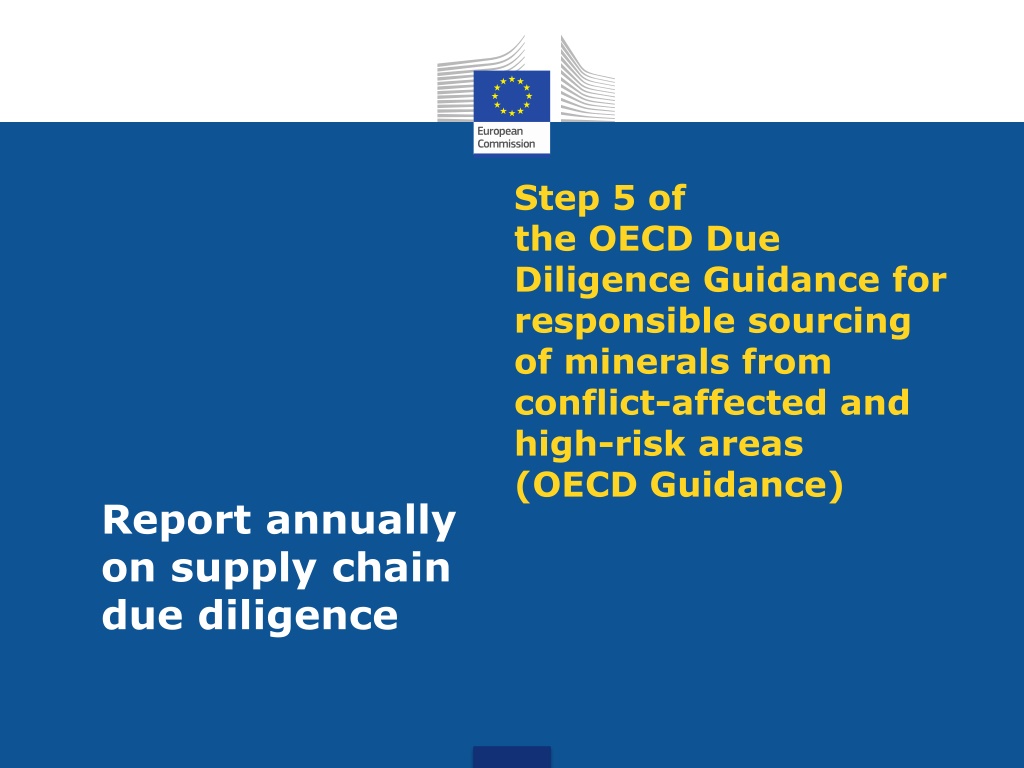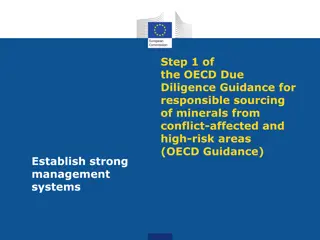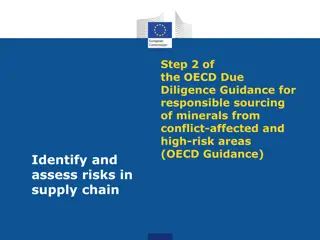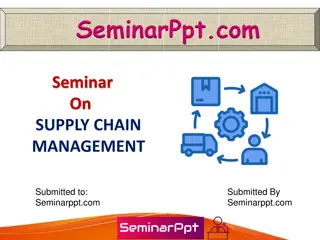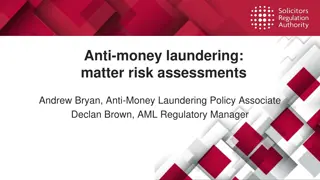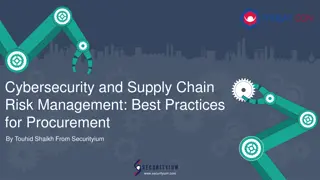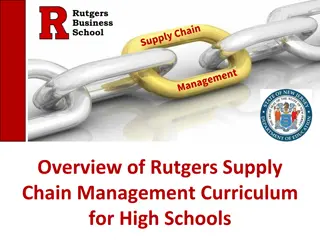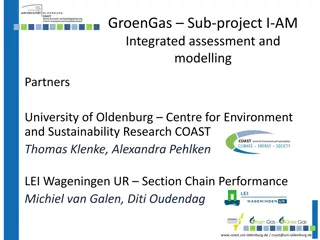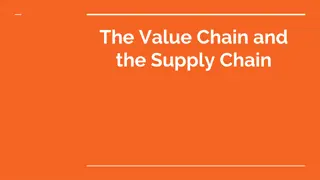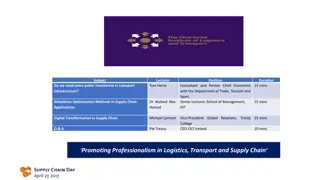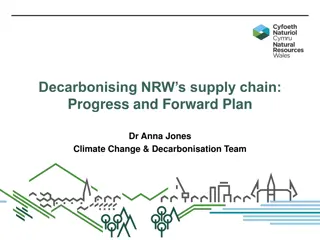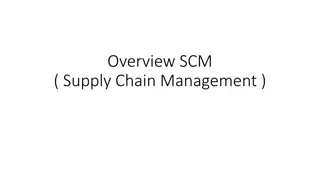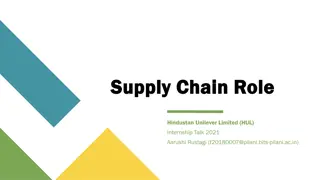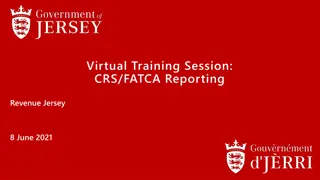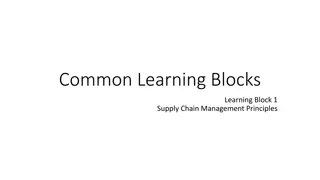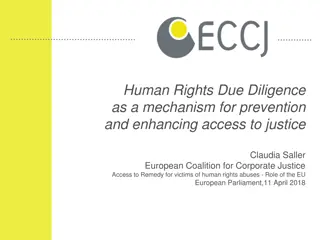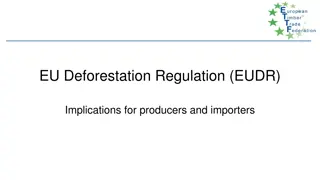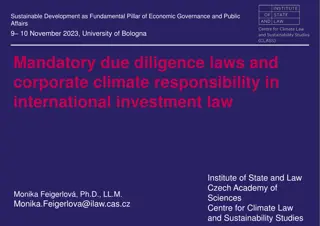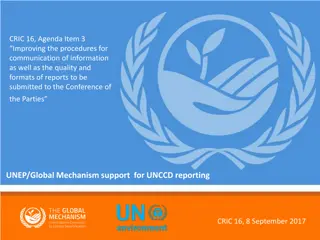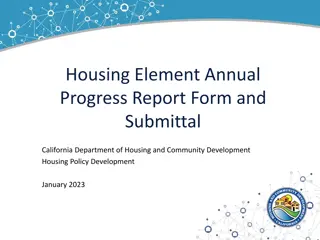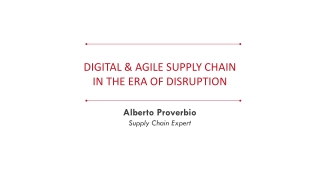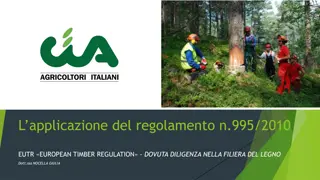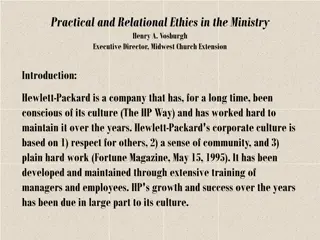Annual Reporting for Supply Chain Due Diligence: A Guide
Reporting annually on supply chain due diligence is a critical aspect of implementing responsible sourcing practices as per the OECD Guidance. It helps in managing risks effectively, building stakeholder trust, and facilitating continuous improvement. The due diligence report should cover various elements, including management systems, risk identification and assessment, risk management strategies, and audit activities. By providing transparent information on these aspects, companies can enhance their accountability and further strengthen their due diligence efforts.
Download Presentation

Please find below an Image/Link to download the presentation.
The content on the website is provided AS IS for your information and personal use only. It may not be sold, licensed, or shared on other websites without obtaining consent from the author. Download presentation by click this link. If you encounter any issues during the download, it is possible that the publisher has removed the file from their server.
E N D
Presentation Transcript
Step 5 of the OECD Due Diligence Guidance for responsible sourcing of minerals from conflict-affected and high-risk areas (OECD Guidance) Report annually on supply chain due diligence
Content 1. Introduction to reporting 2. Content of a due diligence report
Introduction to reporting Reporting can help your company with: Progress management on risk management and procedures; Building trust of stakeholders, including investors and customers Continuous improvement: remember due diligence is a process of continuous improvement and through annual reporting companies can identify areas of progress and improvements still needed
CONTENTS OF A DUE DILIGENCE REPORT 1/4 The due diligence report should be Written annually. Publicly available, e.g. website. Information on your management systems: Describe steps taken to implement a strong company management system. Include details about your policies. Include details about the management structure when possible indicate who in the company is directly responsible. Explain the control system you put in place over the supply chain and describe how it helped your company institute stronger due diligence efforts. Indicate what database and record keeping you use.
CONTENTS OF A DUE DILIGENCE REPORT 2/4 Information on your risk identification and assessment: Describe the steps you have taken to identify and assess your risks in the supply chain. Explain the methodology you use to do supply chain risk assessment. Describe the steps you have taken to identify refiners/smelters in your supply chain (If you are a downstream company). Describe how you assess their due diligence practices. Disclose actual or potential risks identified by the company.
CONTENTS OF A DUE DILIGENCE REPORT 3/4 Information on your risk management: Describe steps taken to design and implement a strategy to respond to identified risks. Describe the steps you take to manage risks. Describe how the company monitors and tracks the performance of its risk mitigation. Include a summary of risk mitigation activities undertaken both generally and in relation to specific incidents arising. Include any training that was delivered or received. Include details about your engagement with stakeholders. Describe if and how you evaluated your improvements after 6 months
CONTENTS OF A DUE DILIGENCE REPORT 4/4 Information on audits: The public summary of your audits The audit activities The audit conclusions Information on grievances and remedy: The grievances received and how you handled them How you ensured remediation of materialised risks was achieved
Thank you For further information visit the Due Diligence Ready! portal
